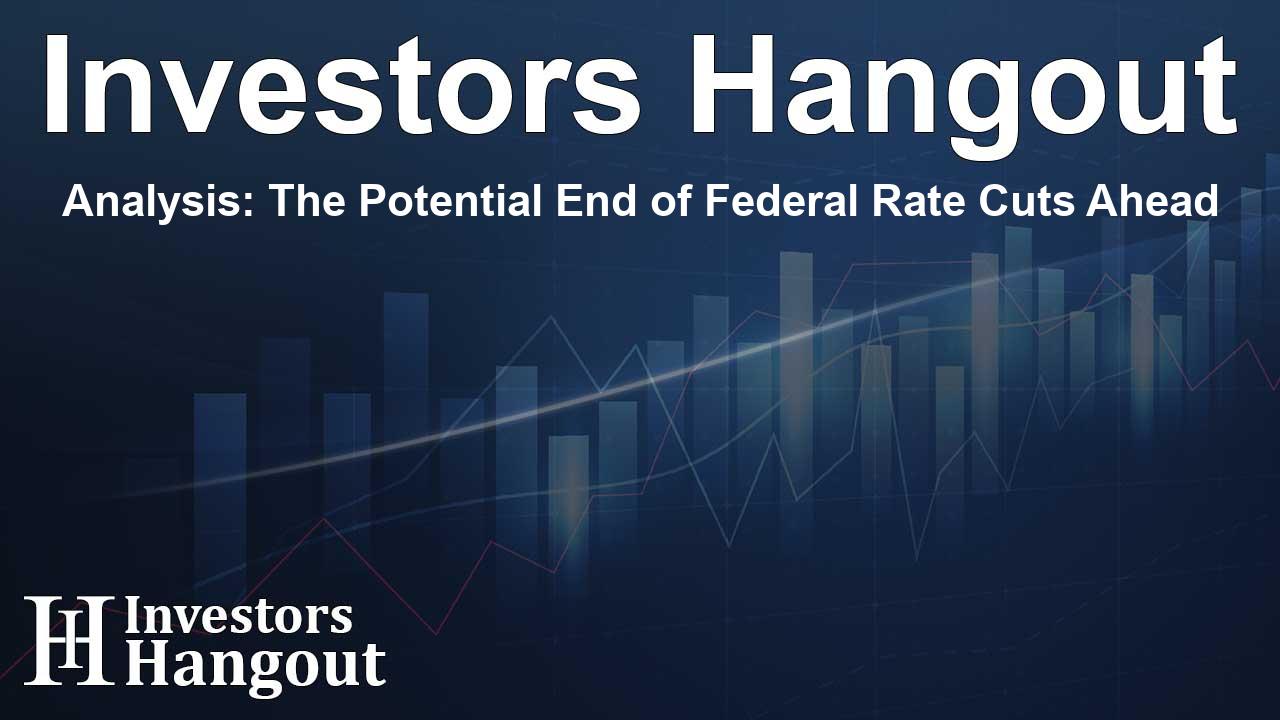Analysis: The Potential End of Federal Rate Cuts Ahead

Potential Shift in the Federal Reserve's Rate Policy
Recent discussions have emerged concerning the Federal Reserve's monetary policy adjustments. The anticipation around a significant rate reduction has been a prominent theme for market participants. Following standard expectations, the Federal Reserve made a decisive move by announcing a 25 basis points cut to the target federal funds rate, decreasing the range to 4.25%-4.50%.
Understanding the Hawkish Rate Cut
Bank of America analysts labeled this action as a "hawkish rate cut". This distinction indicates that while the Fed is cutting rates, it is simultaneously adopting a more cautious stance regarding future monetary policy changes. This perspective was articulated in the recent Federal Open Market Committee (FOMC) statement, where a shift in language was noted. The focus has now expanded to “the extent and timing of additional adjustments” rather than a blanket statement about further cuts.
Market Interpretation of Fed Decisions
The analysts from BofA, led by Aditya Bhave, opined that these modifications may signal that the rate-cutting cycle may be nearing completion. This viewpoint aligns with the current economic landscape, characterized by changing inflation dynamics and economic projections.
Economic Projections and Inflation Concerns
The Summary of Economic Projections (SEP) provided new insights, revealing that committee members foresee only two additional rate cuts in 2025. This consensus reflects significant unease regarding inflation rates, with updated forecasts for both headline and core Personal Consumption Expenditures (PCE) inflation indicating an increase to around 2.5% for the upcoming years.
Growth and Employment Perspectives
Furthermore, the latest macroeconomic forecasts suggest that there's enhanced confidence in economic growth, with a slight uptick in growth projections. Additionally, the unemployment rate is anticipated to see a decline, highlighting robust labor market fundamentals.
Inflationary Risks and Policy Implications
Interestingly, the distribution of risks within the economy appears to be skewing toward increasing inflation. This perception has been attributed to various factors, including fiscal and trade strategies implemented in recent years. Analysts observed that if tariffs significantly influence inflationary pressures, one would expect to witness a more conservative growth estimate for 2025.
Future Expectations from the Fed
During a recent press briefing, Federal Reserve Chair Jerome Powell reiterated that a more gradual pace of rate cuts could now serve as the baseline for expectations. Powell referenced gradual cooling within the labor market and the ongoing trajectory of inflation as critical aspects informing their decisions.
Bank of America's Forecast and Market Outlook
As the discussion on tariff implications continues, BofA remains firm in its outlook for two additional rate cuts in 2025. However, they recognize that the probability of achieving fewer cuts, or potentially none, is becoming increasingly likely. This evolving narrative serves to remind investors and market participants of the uncertainties tied to Federal Reserve policies and their broader economic implications, emphasizing the need for attentiveness to upcoming fiscal developments.
Frequently Asked Questions
What did the Federal Reserve decide in its latest meeting?
The Federal Reserve announced a 25 basis points cut to the target federal funds rate.
How did Bank of America analyze the Fed's rate cut?
Bank of America described the rate cut as a “hawkish rate cut,” indicating a cautious approach toward future adjustments.
What do the economic projections suggest for inflation?
The economic projections indicate an increase in inflation forecasts to around 2.5% for the upcoming years.
What is the anticipated outlook for the unemployment rate?
The unemployment rate is expected to decline, signaling potential improvements in the labor market.
How might tariffs impact future economic forecasts?
Analysts suggest that if tariffs significantly drive inflation, it could result in lower growth forecasts for 2025.
About The Author
Contact Caleb Price privately here. Or send an email with ATTN: Caleb Price as the subject to contact@investorshangout.com.
About Investors Hangout
Investors Hangout is a leading online stock forum for financial discussion and learning, offering a wide range of free tools and resources. It draws in traders of all levels, who exchange market knowledge, investigate trading tactics, and keep an eye on industry developments in real time. Featuring financial articles, stock message boards, quotes, charts, company profiles, and live news updates. Through cooperative learning and a wealth of informational resources, it helps users from novices creating their first portfolios to experts honing their techniques. Join Investors Hangout today: https://investorshangout.com/
The content of this article is based on factual, publicly available information and does not represent legal, financial, or investment advice. Investors Hangout does not offer financial advice, and the author is not a licensed financial advisor. Consult a qualified advisor before making any financial or investment decisions based on this article. This article should not be considered advice to purchase, sell, or hold any securities or other investments. If any of the material provided here is inaccurate, please contact us for corrections.
